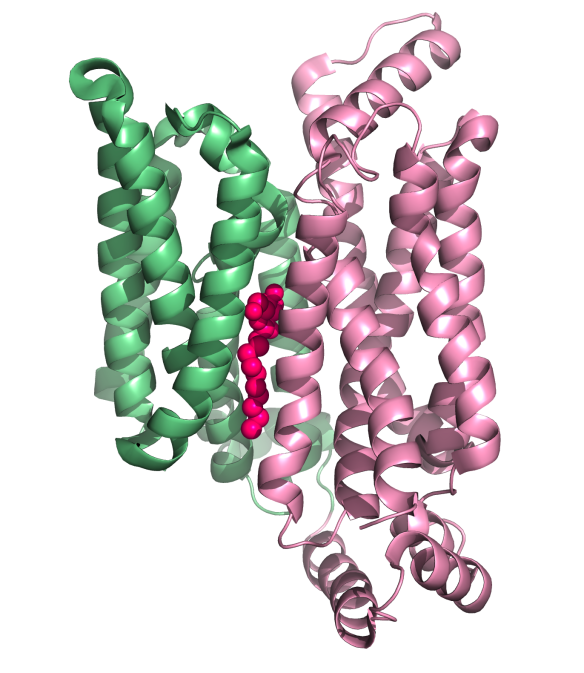How Sweet! The structure of the Glucose Transporter 1
What is it?
The human glucose transporter 1 (GLUT1) sits in the membrane of the cell, and is important for supplying glucose to the brain and other organs. This protein catalyses the transport of glucose along its concentration gradient across the membrane. It is important for the uptake of glucose required to drive respiration in all cells in our body.
What does it look like?
The glucose transporter consists of twelve TM helices that create a central groove for transporting glucose across the membrane. This structure of the transporter was only published this month (June 2014) and shows GLUT1 in its inward-open conformation (i.e. the transporter is open to the inside of the cell). The protein itself is highly dynamic, constantly changing conformation in order to transport glucose. In order to determine the crystal structure of this protein, researchers had to mutate the protein to 'lock' it in one conformation.

Image generated by Pymol (http://www.pymol.org/) using the coordinates from the protein data bank (pdb code: 4pyp).
Where did the structure come from?
The structure was determined to 3.2 Å and was published in Nature in June 2014.
The structure of the glucose transporter is important as it helps us to map disease related mutations (for example, mutations in GLUT1 are linked to 'De Vivo' disease that causes seizures in patients).






